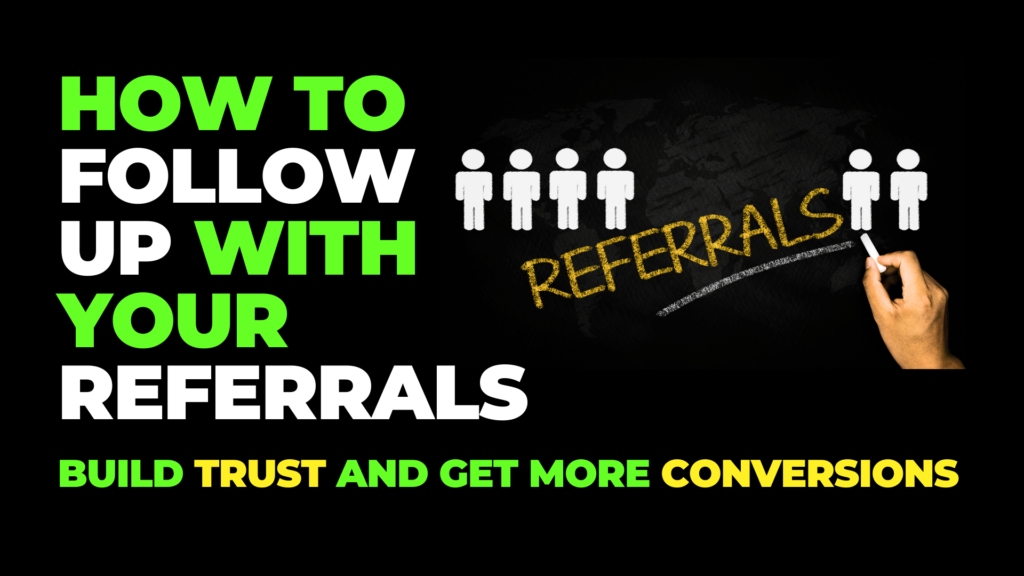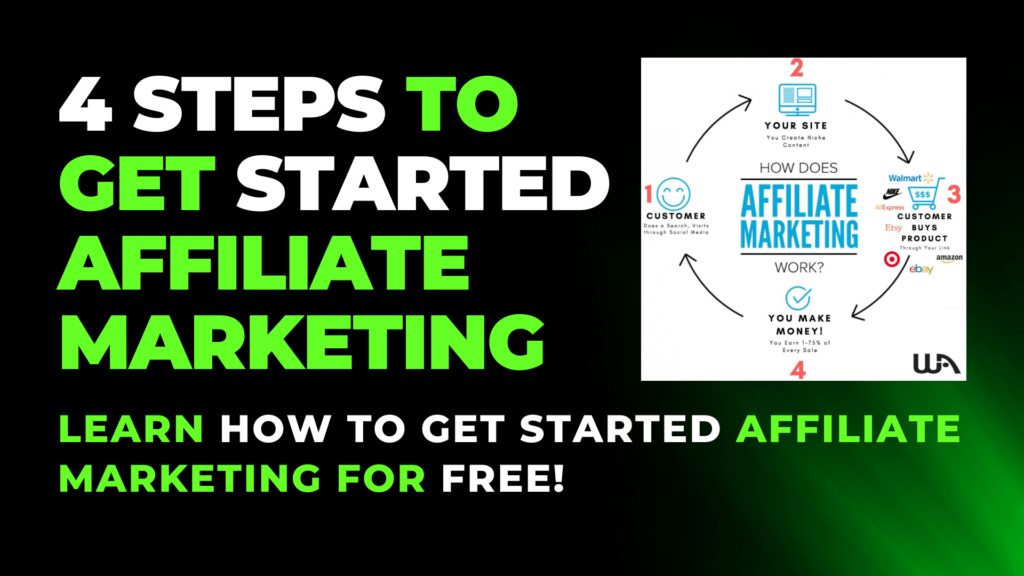Today, I would like to discuss how to follow up with your referrals effectively to help turn leads into loyal customers. Whether you are in advertising, sales, or running any online business, having a solid follow-up strategy is crucial.
In this blog, I will share 5 simple yet effective ways to follow up with your referrals online, so you can build strong relationships, and close more deals.
What I Will Cover
- Sending personalized emails.
- How to connect on social media.
- Send a video message.
- Offer a free resource or consultation.
- Follow up multiple times without being annoying.
1. Sending a Personalized Email
One of the easiest ways to follow up with your referrals is through email. But instead of sending generic emails, personalized emails will make a stronger first impression.
How To Craft An Effective Follow-Up Email
- Use the referrer’s name: Mention who referred them to create instant trust.
- Show appreciation: Thank them for their time and acknowledge the referral.
- Provide free value: Offer useful information or resources related to their needs.
- Book a call to action (CTA) : Encourage them to book a call to action, visit your website, or reply.
Example Email Template:
“Hey [Referral’s Name],
[Referrer’s Name] mentioned that you might be interested in [your product/service].
I’d love to connect and see how I can help.
Let’s set up a quick call or chat over email, whatever works best for you!
Looking forward to hearing from you!
[Your Name]”
A well-crafted email keeps things professional yet warm, making it more likely that the referral will respond.
2. Connect on Social Media

Social media can be a powerful tool to use when wanting to follow up with referrals. It is less formal than emailing and allows for natural, ongoing interaction.
How To Connect On Social Media
- Send a friendly message: Introduce yourself and talk about common interests and what you do, something they can relate to.
- Engage with their content: Like, comment, or share their posts to build trust and increase FB algorithm in your favor.
- Offer value before pitching: Share valuable articles, resources, or tips.
Example LinkedIn Message:
“Hey [Referral’s Name],
[Referrer’s Name] suggested I connect with you. I’d love to learn more about what you do and see if there’s any way I can help.
Let’s stay in touch!”
By building a relationship on social media first, your follow-up won’t feel like a sales pitch.
3. Send a Video Message

If you want to stand out from the crowd, try sending a video message.
Videos feel more personalized, engaging, and authentic.
People are more likely to respond when they feel a person is speaking directly to them.
Tips For Effective Video Follow-Up:
- Keep your video under 60 seconds to maintain attention.
- Use a friendly, conversational tone. (Don’t sound scripted)
- End with a simple call to action.
4. Offer a Free Resource or Consultation
Offer something of value from the get-go! Instead of asking for a meeting or extracting information like an interrogation, offer something of value, something useful.
Free Resource Ideas
- A free eBook or guide related to their interests.
- A discount code or an exclusive deal
- A free 15-minute consultation or audit.
Example Message:
“Hey [Referral’s Name], I wanted to share this free guide with you on (relevant topic).
I think you’ll find it helpful!
Also, if you ever want to chat, I’d be happy to offer a quick free consultation, just let me know!”
5. Follow Up Multiple Times Without Being Annoying

Keep in mind that not everyone will respond straight away, and this is ok.
The key is to follow up without being too pushy.
Here is a Simple Follow-Up Schedule
- Initial contact on signup: Send a polite video, message, email, and make sure to follow through with free giveaways.
- Follow up 1 – 3 days after signup: Send a polite reminder that you are there to help them. Offer more value.
- Follow-up 3 – 5 days after signup: Check in and offer additional value.
- Final follow-up: 1 – 2 weeks after sign-up: One last friendly message before moving on.
Example Final Follow-Up:
“Hey [Referral’s Name], just wanted to check in one last time.
No pressure, just wanted to see if you were still interested. Let me know either way, and I’d be happy to help!”
If they don’t respond after that, move on and focus on other leads. Sometimes, people just aren’t ready, and that’s okay!
Why Follow Up With Your Referrals?
Following up with your referrals builds trust. If there is no face to the name or no name to the face, people cannot relate and will not trust or commit to what you are recommending to do or buy.
The importance is also for long-term success. Building trust with your referrals also means you will build relationships with them.
This is what we want.
If you are newish to affiliate marketing or working online and need more conversions, start by implementing some or all of the methods I have mentioned in this blog.
Grab Your "Affiliate Success Checklist" Free
Access the 5 step blueprint to quit your 9 – 5 job with affiliate marketing.






In the digital age, where businesses thrive on networking and referrals, mastering the follow-up process is essential. Yet, many online entrepreneurs and marketers either overlook or mishandle this crucial step, leading to missed opportunities and lost connections. The article “How to Follow Up With Your Referrals Online: 5 Best Ways” provides a practical guide to engaging with referrals effectively, highlighting the importance of personal connection over transactional outreach.
One of the most valuable takeaways is the emphasis on personalized communication. A generic email blast or a cold, scripted message rarely yields results. Instead, addressing referrals by name, acknowledging their interests, and referencing mutual connections can create an immediate sense of trust. The provided email template serves as a strong example of how to initiate meaningful conversations rather than push for an instant sale.
Another standout strategy is leveraging social media for engagement. Platforms like LinkedIn, Facebook, and Instagram allow businesses to interact with potential clients in a more casual and ongoing manner. Engaging with a referral’s posts, commenting on their content, or sharing useful resources fosters a relationship that feels organic rather than opportunistic. This approach not only increases response rates but also ensures that the follow-up doesn’t feel like an aggressive sales pitch.
Perhaps the most innovative suggestion is sending a video message. In a world saturated with text-based communication, a short, personalized video can break through the noise. A friendly, face-to-face message humanizes the interaction, making it more likely that the recipient will engage. With tools like Loom and WhatsApp making video messaging more accessible, this method is an underutilized game-changer in online networking.
Equally important is the principle of offering value before making an ask. Too often, marketers rush to close a deal without considering what they can provide upfront. A free resource, a short consultation, or a discount code can turn a cold lead into an interested prospect. This aligns with the concept of reciprocity—when someone receives something of value, they are more inclined to respond positively.
Finally, the article wisely addresses the delicate balance of persistence without annoyance. Many potential leads require multiple touchpoints before they engage, but aggressive follow-ups can be counterproductive. The recommended follow-up schedule—spaced out over days and weeks—ensures that communication remains consistent without becoming overbearing. The key is knowing when to step back if a referral remains unresponsive.
In essence, following up with referrals isn’t just about closing deals—it’s about building lasting relationships. By focusing on genuine engagement, offering value, and respecting boundaries, businesses can turn leads into loyal customers. The strategies outlined in this article serve as a valuable roadmap for anyone looking to enhance their referral game and foster authentic connections in the digital marketplace.
Thanks for your comment.
I really liked how this article breaks down the importance of following up with referrals the right way. The emphasis on personalizing responses and keeping referrers in the loop makes total sense, it builds trust and encourages more referrals down the line. Plus, the reminder to show gratitude is such a simple yet powerful way to strengthen connections. Thank you for sharing!
Glad you found the article helpful. Building trust and offering help to our referrals is a must. Understanding where people are on their journey is crucial as well; that way, we can identify the areas in which they need help.
Best regards.